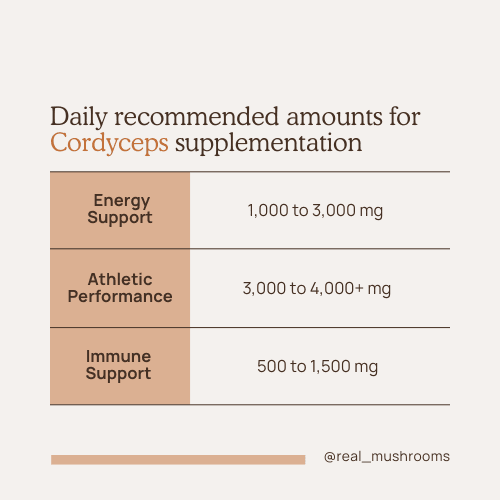Menu


With the return of The Last of Us Season 2, audiences are once again captivated by the unsettling idea of a fungus that doesn't just control minds—it completely takes over its host, reshaping biology and behavior. While human Cordyceps zombies remain the stuff of fiction, in the insect world, they are a reality, where the fungus hijacks its host’s behavior to ensure its survival.
Thankfully, Cordyceps plays an entirely different role in humans. Rather than overtaking its host, it works in harmony with the body to support energy, immune function, and metabolic processes—key aspects of maintaining overall well-being. Once a treasured mushroom in traditional medicine systems, it is now at the forefront of scientific research, with studies beginning to confirm its diverse health benefits.
With over 35 years in the herbal medicine industry—blending traditional botanical wisdom with cutting-edge biomedical science—I’ve dedicated my career to understanding how functional mushrooms, herbs, and adaptogens fit into modern wellness. As a practitioner, my clinical experience has shown me firsthand how Cordyceps militaris can optimize vitality, endurance, and long-term health.
As spring ushers in a season of renewal and vitality, Cordyceps militaris stands out as a natural choice for sustained energy, endurance, and overall performance. Long celebrated for its ability to support resilience and metabolic health, it’s the perfect complement to a time of fresh starts and revitalization. Building on this understanding, let’s explore the history, clinical research, and real-world applications of this remarkable fungus—helping you feel your best this season and beyond.
Traditionally, Cordyceps has been classified as a tonic in Traditional Chinese Medicine (TCM), revered for its ability to enhance vitality, restore strength, and nourish Jing (life essence). It was primarily used to fortify the lungs, kidneys, and immune system, supporting endurance, longevity, and overall resilience [13].
The term tonic has a long history across various traditional healing systems, though it has fallen out of favor in modern scientific discussion due to its broad and somewhat ambiguous definition. However, in my clinical practice, I use tonic to describe substances that enhance the tone, vigor, and function of a specific organ, a bodily system, or the body as a whole, promoting sustained well-being and energy over time [1] [5]. In this context, Cordyceps militaris exemplifies a classic tonic, supporting overall vitality and resilience in a way that aligns with both traditional use and modern scientific understanding.
From a modern perspective, Cordyceps militaris also exhibits adaptogen-like properties, particularly in its ability to help the body adjust to stress and maintain balance. Adaptogens are known for their ability to support resilience through regulating stress response systems, including the neuroendocrine-immune network. Research suggests that C. militaris contributes to this process by influencing mitochondrial function, energy metabolism, and cellular signaling pathways that help the body adapt to physical and environmental stressors [18].
It is important to note that the concepts of tonic and adaptogen are not mutually exclusive. In my training, herbs and mushrooms often have multiple physiological actions, meaning a single substance can both strengthen the body over time and enhance its ability to adapt to stress.
While tonics are traditionally seen as nourishing and restorative, adaptogens specifically help regulate the body’s response to stress. Cordyceps militaris embodies both roles—rooted in ancient tradition while increasingly recognized for its ability to support resilience and overall well-being.
Cordyceps has played a prominent role in Traditional Chinese and Tibetan Medicine, where it has been used to support:
These traditional uses were based on centuries of observation and practice. Today, scientific research continues to explore and validate these applications, shedding new light on the mechanisms behind Cordyceps’ historical reputation [4] [16].
Cordyceps militaris (CM) has emerged as the preferred species due to its accessibility, sustainability, and superior bioactive profile. Unlike other species, CM can be cultivated on plant-based substrates such as brown rice, eliminating the ethical and environmental concerns associated with harvesting wild fungi.
A crucial distinction sets CM apart: It is naturally rich in cordycepin (3'-deoxyadenosine), a bioactive nucleoside absent in Ophiocordyceps sinensis [2]. Cordycepin is actively being studied for its potential to support metabolic processes, healthy inflammatory responses, and physical endurance. Over 1,500 scientific papers have been published on cordycepin, highlighting its broad therapeutic potential.
By offering a sustainable and equally effective alternative, CM is the clear choice for those looking to harness the full potential of Cordyceps without the limitations of traditional sources.
While traditional knowledge provides a strong foundation, modern science increasingly supports CM as the superior option. Recent clinical studies highlight the potential health benefits of CM, particularly its effects on:
Potential & Emerging Uses

Cordyceps contains two primary categories of bioactive compounds:
Cordycepin (3'-deoxyadenosine) is a rare compound found only in Cordyceps militaris. It closely resembles adenosine—a key nucleoside and fundamental building block involved in energy production (the “A” in ATP), RNA synthesis, and cellular signaling.
RNA (ribonucleic acid) is a molecule that helps cells read genetic instructions from DNA and build the proteins they need to function. It plays a crucial role in everything from energy metabolism to repairing cells.
Because cordycepin mimics adenosine, it can fine-tune —or even redirect—RNA-related processes in a way that helps regulate:
This ability to modulate RNA activity makes cordycepin a fascinating compound—not a zombie-inducing molecule, but a true biological and metabolic regulator.
For those interested in the deeper biological mechanisms at play, here’s a simplified breakdown of cordycepin, that standout compound in Cordyceps militaris:
This section is for the super nerdy and those who love diving into the deeper biological mechanisms at play. If that’s not you, feel free to skip ahead!
The biohacking community has been buzzing about pentostatin, an adenosine deaminase (ADA) inhibitor found in CM that could theoretically extend the bioactive effects of cordycepin. In the CM fungus, pentostatin protects cordycepin from being broken down. Some researchers have hypothesized —despite a lack of human studies—that it could slow cordycepin breakdown in humans, potentially amplifying its endurance and recovery benefits. However, the recent research on 3DI —the precursor to intracellular cordycepin—as discussed above, has debunked this idea. Nature already provides the best solution [4] [19]!
As spring rejuvenates nature, our bodies also seek renewal—supporting energy, resilience, and immune strength. Cordyceps militaris aligns perfectly with this seasonal shift, supporting endurance, immunity, and optimizing metabolic function. Whether you're an athlete, a busy professional, or simply looking to sustain vitality, integrating CM into your routine this season can set the foundation for long-term well-being

The optimal daily amount of Cordyceps varies based on individual needs and desired benefits. Starting with a lower dose and gradually increasing is recommended. For energy support, higher daily amounts may be required.
Many commercial “Cordyceps” supplements are made using mycelium fermented grains like brown rice and oats, rather than the actual mushroom (fruiting body). This results in a product with a high starch content and significantly lower levels of bioactive compounds, including beta-glucans and cordycepin [10]. In contrast, mushroom (fruiting body) extracts contain the highest concentrations of these beneficial compounds.
Additionally, some product labels list cordycepic acid, which can be misleading. Cordycepic acid is not the same as cordycepin—it is an outdated term for mannitol, a common sugar found in most mushrooms. Companies that highlight cordycepic acid may be attempting to create the false impression that their product contains cordycepin.
It's also worth noting that Cordyceps sinensis products do not contain cordycepin, further reinforcing why CM is the superior choice.
The real-world science of Cordyceps militaris is just as compelling as the fiction of The Last of Us. While it won’t turn you into a fungal zombie, its unique components support natural biological processes related to metabolism, immune health, and cellular function, offering a powerful way to promote overall well-being.
As you step into spring, take your energy and resilience to the next level with Cordyceps! Experience the scientifically backed benefits of C. militaris—boosting endurance, strengthening immunity, and optimizing metabolic health for lasting vitality.
By combining ancient tradition with cutting-edge research, Cordyceps militaris is more than just a seasonal booster—it’s a lifelong ally for health and vitality.

Disclaimer: The information or products mentioned in this article are provided as information resources only, and are not to be used or relied on to diagnose, treat, cure, or prevent any disease. This information does not create any patient-doctor relationship, and should not be used as a substitute for professional diagnosis and treatment. The information is intended for health care professionals only. The statements made in this article have not been evaluated by the Food and Drug Administration. Any products mentioned are not intended to diagnose, treat, cure, or prevent any disease. The information in this article is intended for educational purposes. The information is not intended to replace medical advice offered by licensed medical physicians. Please consult your doctor or health practitioner for any medical advice.